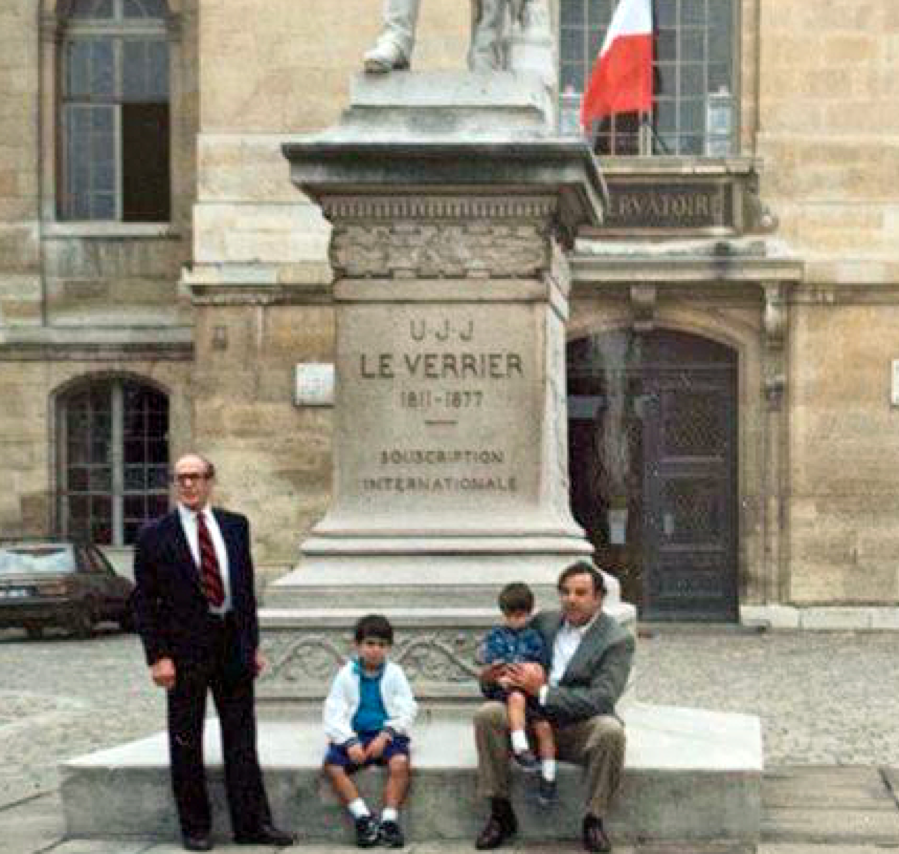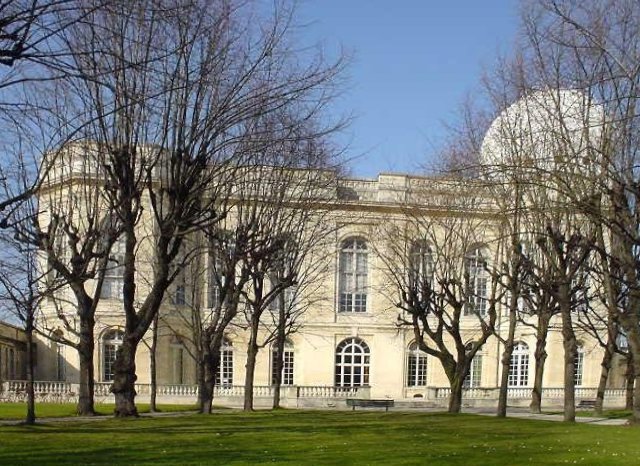Urbain Le Verrier Famously Discovered Neptune Purely Through Math


It is interesting how events from almost 175 years ago can have direct connections with people today. I am thinking of my former classmate, Rick Leverrier, who is not only directly connected with Urbain Le Verrier, the discoverer of Neptune, but also indirectly to one of the American challengers to that claim.
Urbain Le Verrier, born in 1811, famously predicted the existence and position of Neptune purely through mathematics in 1846. Already a published author of astronomical observations, he was encouraged by the director of the Paris Observatory to study the unexplained deviations in the orbit of Uranus from that predicted by Newton’s law of gravity. After many months of calculations, Le Verrier sent his findings to the astronomer Jonathan Galle in Berlin who confirmed his prediction overnight.
The history of science is replete with instances of coincidental discoveries by scientists who did not know of each other. A counter claim was soon made by the English astronomer John Couch Adams. Inevitably, charges of plagiarism and other improprieties were flying between the two countries.
And the subject became an equally hot topic in the United States, which was determined to show its capabilities in science. When word of the discovery reached the US, Sears Cook Walker, a scientist at the Naval Observatory in Washington, DC, suggested action to his superintendent, Matthew Fontaine Maury. After initial hesitation, Maury agreed; and Walker discovered that some 50 years earlier, a French astronomer, Joseph Lalande, had sighted something in the vicinity of Neptune. Assuming that the sighting was indeed that of Neptune, Walker reworked the calculations and credited the discovery to Lalande. Le Verrier soon received the American claim and reported it to the French Academy. Subsequently, Benjamin Pierce of Harvard, who was determined to improve the United States’ scientific standing, stated that Le Verrier was wrong and the sightings by Galle were a “happy accident.”

In retrospective, Neptune was indeed predicted and observed by several other people. Walker’s work led to a more perfect calculation of Neptune’s orbit, but Le Verrier was the first with his announcement and was thus awarded the discovery laurels. See “The Curious Aftermath of Neptune’s Discovery” by Deborah Kent in Physics Today, December 1, 2011.
Urbain lived until 1877. Not much is known about his son Urbain Louis or his grandson Paul. Great-grandson Rene was born in 1913 and grew up on a farm in Normandy. The family suffered through World War II when German troops were bivouacked at their farm. The family escaped harm, but unfortunately, almost all family memorabilia disappeared. At some point after the war Rene emigrated to the United States, where he ultimately became the French Embassy chef and was also associated with well-known DC restaurants.
His son Rick, then a sales manager for a classical music station in DC, received an unexpected call in 1980 from a scientist at the NASA Goddard Space Flight Center, who asked if he was related to the famous French astronomer. If so, would he be interested in helping to publicize the Voyager 2 1989 fly-by of Neptune, nine years hence. Rick agreed and promptly forgot about the call.
But sure enough, nine years later he received a call from Goddard— from the same person.
His family was invited to a reception at the Smithsonian Air and Space Museum, where they were interviewed by CBS, and invited to witness the actual fly-by at Goddard. Rene gave a speech in his strong French accent, saying: “I just feel a tremendous pride. It is astounding to think that man has sent a machine 3 billion miles that is passing within a few thousand miles of his discovery.”
Several years later, the family was on vacation in France when Rick decided to call the Paris Observatory. The staff was very happy to hear from him and invited the family for a personal tour of the observatory, including a visit to the roof. Rick says that he particularly remembered seeing the Paris Meridian line set on the floor of the building.
Some years later, Rick found another surprising connection with his great ancestor. He had joined a local real estate company called Stuart and Maury. At some point, Rick became aware of several references to the Maury name, especially in US Navy history. He soon found out that his business partner, Maury, was a direct descendant of the Maury who was superintendent of the Naval Observatory in DC and who initiated the research used to challenge Le Verrier’s claim.
According to Wikipedia, “Matthew Fontaine Maury (January 14, 1806 – February 1, 1873) was an American astronomer, naval officer, historian, oceanographer, meteorologist, cartographer, author, geologist, and educator. He was nicknamed ‘Pathfinder of the Seas’ and ‘Father of Modern Oceanography and Naval Meteorology’ and later, ‘Scientist of the Seas’ for his extensive works in his books, especially The Physical Geography of the Sea (1855), the first such extensive and comprehensive book on oceanography to be published. Maury made many important new contributions to charting winds and ocean currents, including ocean lanes for passing ships at sea.”
Coincidentally, after writing the first draft of this article, while rummaging through some photos, I found this one of a plaque dedicated to Maury, near a Civil War battlefield.

Rick also told me that a play was being written about the people behind the American challenge to the French. I spoke with the author and look forward to learning more about the play.
If you have a chance, visit the US Naval Observatory and its great library. See views of the main telescope and the library in the next two photographs.

Here’s the story of the telescope from the USNO website: “The USNO 26-inch ‘Great Equatorial’ refracting telescope is located on the grounds of the Observatory at Washington, DC and is included as part of the Monday night tour when skies are cloudy.
“This telescope has a rich history. Completed in 1873 at a cost of $50,000, it was the largest refracting telescope in the world for a decade. The lens and mounting were made by the renowned firm of Alvan Clark & Sons of Cambridgeport, MA, and the great telescope was duly erected on the grounds of the old Naval Observatory site in the Foggy Bottom section of Washington.

“It was from this site, in August of 1877, that astronomer Asaph Hall discovered the two moons of Mars, Phobos and Deimos, with the ‘Great Equatorial Telescope’, bringing the attention of the world to the USNO.
“The move to the Observatory’s present site in 1893 allowed the 26-inch lens to be re-mounted in a new dome with a new mounting designed by the Warner & Swasey Company of Cleveland, OH. This design incorporated a rising floor to facilitate access to the eyepiece. This floor is still the largest elevator in the city!
“Today, the telescope is used on every clear night to measure the astrometric parameters of double stars. Over the years, visual observations by astronomers using micrometers have been replaced by electronic imaging techniques. By taking very short exposures with a Charge-Coupled Device (CCD) camera, astronomers can actually use the blurring effect of Earth’s atmosphere to their advantage to measure the separations and position angles of double star components. The technique, known as ‘speckle interferometry’, is ideally suited to the nearly 145-year-old optics of the great telescope, and relatively unaffected by the urban location of the Observatory. Several thousand stars are measured annually, and the database of such observations, added to the visual observations dating back over a century, provide for one of the most concise double star catalogs in the world.
“The telescope has also been used to measure the positions of the moons of the outer planets to help refine their orbital parameters. These data are vital in planning missions to such distant worlds.”








